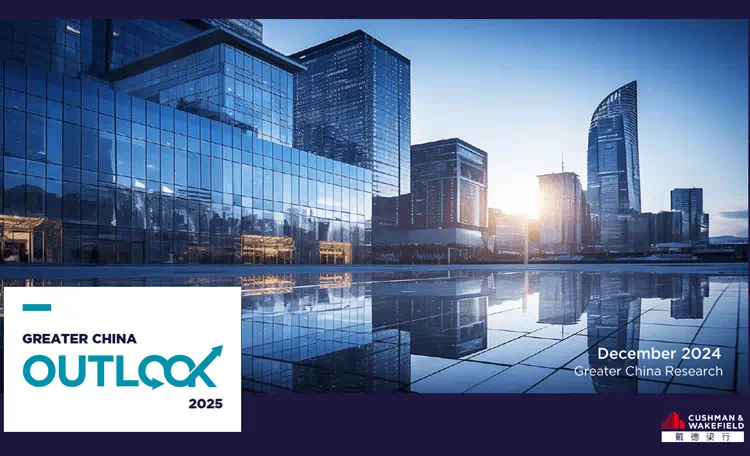So you want to open a sustainable retail store. What’s the first thing you need to think about?
Selection of your location and unit is important. You should engage with the prospective landlord prior to signing your lease in order to determine their own sustainability objectives and commitments.
Can you give an example of what to look out for?
One of our key investment trust clients, who are acting landlords to over 750 retailers, are a good example. They have achieved in-construction certifications for a number of their latest development projects and are also looking at rolling out in-use certifications across their standing portfolio this year. They have also set ambitious net-zero targets and engage their occupiers in order to achieve these. It’s important to select a landlord who is going to support sustainability improvements such as procuring renewable energy, half-hourly meters, advanced recycling waste measures and improving the energy efficiency of the unit. These are the types of measures which can be incorporated into a green lease, which is another factor a retailer may consider from the offset. It’s also important to choose a location close to where your product is produced if possible, in order to reduce the distance travelled and therefore carbon impacts of your products.
What about once the location has been chosen?
I’d then consider the fit-out of a property, first looking at what is already in the unit and what can be retained. LED lights for example have a lifespan of 20 years, however the average retail tenancy is now around 5 years. This means that a retailer’s contractor may come in and replace all the lights which hypothetically could have 15 years left in use. I’d recommend working with a contractor who has awareness of circular economy principles and can apply these in the form of take back schemes or measures which can extend the lifetime of existing fit-out. When sourcing materials, try to source locally and employ local tradespeople. Online platforms like Gumtree, eBay and Facebook Marketplace are also great for sourcing second-hand furniture and would reduce the overall carbon impact of the fit-out.
What can a retailer do who has an existing portfolio?
The first step should be to work out your carbon impact across full value chain emissions. Understanding your scope 1, 2 and 3 emissions will enable a retailer to focus priorities on the biggest carbon emitters. This will inform the setting of realistic net-zero targets and development of a net-zero strategy and pathway to get there. This is something the sustainability team can assist with, but in short Scope 1 are an organisations direct green house gas emissions such as from boilers or own transport. Scope 2 are indirect emissions such as procured energy, and lastly there are Scope 3 emissions which is everything else in the value chain. These are the most challenging to establish although these are important as they are usually an organisations largest of the three.

How can a retailer get started setting targets?
The UK Retail Industry has a net-zero target of 2040 which has been set by the British Retail Consortium, in addition to setting some nearer term targets which is standard practice. A retailer may want to align their targets with these. C&W can support retailers with determining their scope 1, 2 and 3 emissions and wider carbon reporting and disclosure services.
Should there be a main focus when setting these targets?
Whilst retailers are all different in terms of the products and/or services they sell, the biggest emitter is usually the supply chain (Scope 3 emissions) and should therefore be a major focus point for sustainable retailers. This can span from the transportation of goods and the existing distribution network, to understanding where materials are sourced, worker conditions and making sure a real living wage is being paid. Supply chain greenhouse gases (Scope 3) make up on average 70% of emissions so retailers should focus their efforts on engaging and decarbonising their supply chain.
And what about the actual product?
Quality is key. Retailers should make sure the product is designed and made well to ensure the consumer doesn’t need to replace it next year. We definitely have an issue with a throwaway culture that wasn’t around in previous generations, such as “The Silent Generation” where people didn’t consume as many goods and those that they did have they looked after and repaired when required. This shift has occurred through a variety of factors, such as shopping becoming a leisure activity, mass-advertising, planned obsolescence, and the use of low-paid labour decreasing the price of goods. Retailers who are paying workers fairly and are producing lasting high-quality products should promote these activities in order to attract that “sustainable consumer” who is willing to pay more and therefore make sustainable practices viable. Additionally, whilst “fast fashion” has become part of our culture, “fast” does not always have to equal “waste” and we are seeing more retailers take steps to address the circularity of their products.
Inevitably, people will want to buy new things and keep up with the latest trends. Is there a way to please these consumers while maintaining a sustainable brand?
I’ve seen some fashion retailers such as H&M and M&S introducing clothing banks in their shops which consumers can exchange for vouchers, and Boots has a similar scheme for empty makeup containers. Providing incentives to reward sustainable behaviour is key. As mentioned, I would also encourage anyone looking to buy new clothing following latest trends to explore retailers who have a focus on fair pay and observe circular economy principles.
We’ve discussed retailers looking to open their first store but what about retailers with an existing portfolio, looking to make it more sustainable?
Retailers with existing portfolios will likely have physical stores and existing logistical operations which should be reviewed for carbon reduction opportunities. When reviewing physical stores, retailers should consider procuring renewable energy, installing LED sensor lighting, encouraging sustainable commuting for staff and retrofitting properties where possible to improve energy efficiency. These are examples of sustainability measures which can be included in a green lease.
Whilst the physical shop only makes up on average 10% of a retailer’s emissions, often they have more control compared to more complex contributors like their supply chain, so it’s a logical first step for retailers on their net-zero journey. I’d say the same for logistics which also only makes up 10% on average of overall emissions, but retailers have more control over their fleet, and it’s something that consumers are fairly aware of.
Why do you think that is?
I’m not entirely sure but its definitely something we hear a lot about in terms of the air miles of a particular grocery item for example. It’s clearly labelled where your fruit has come from so consumers have the facts to assess (An Enviroscore), however the supply chain is much more complex and less transparent. Retailer’s delivery vehicles are also visible to their customers on the road so an efficient and decarbonised logistics fleet would be visible to consumers and show commitment to a retailers net zero targets, and ultimately attract and retain a sustainable consumer.
A retailers sustainability status is more important now, than ever. Fashion brands need to impress all aspects of their business operations with their ESG credentials including employees, landlords, investors and last but by no means least, the customer.













